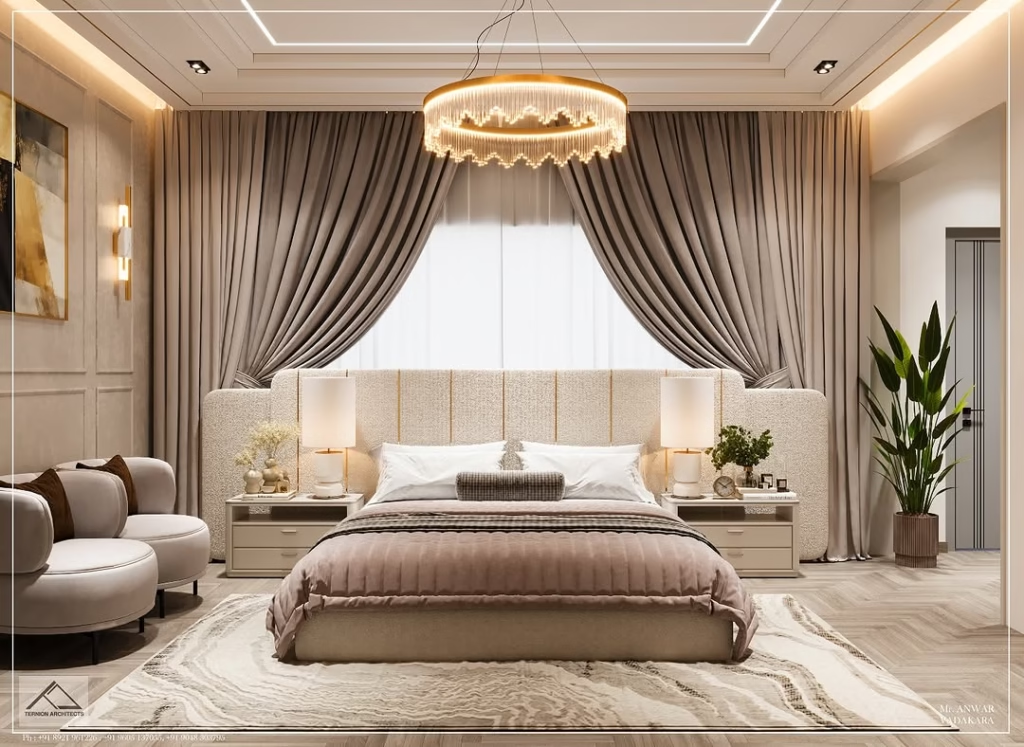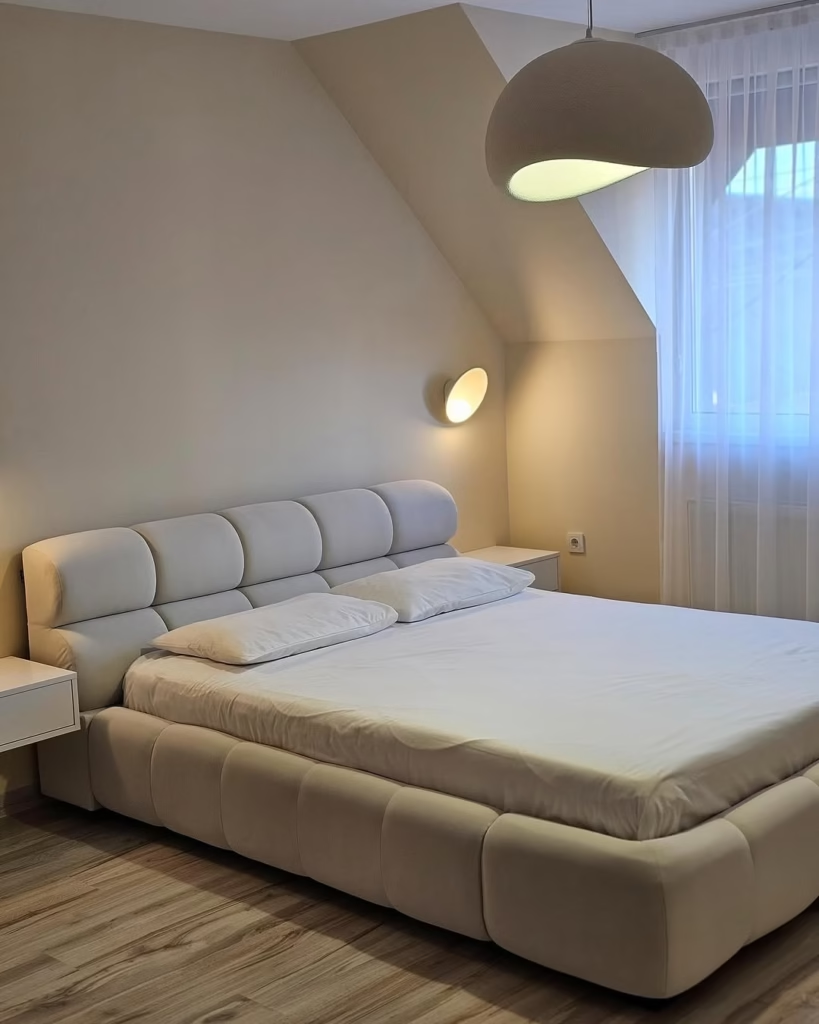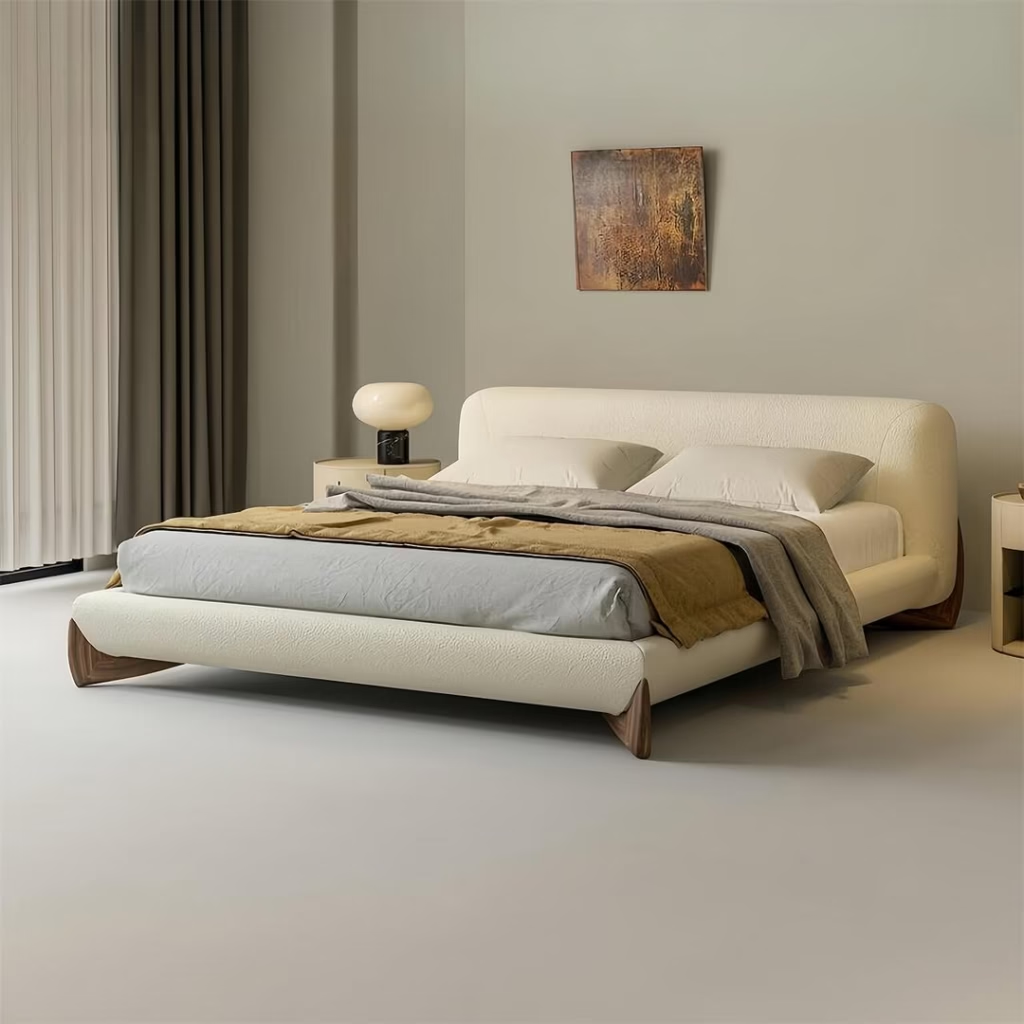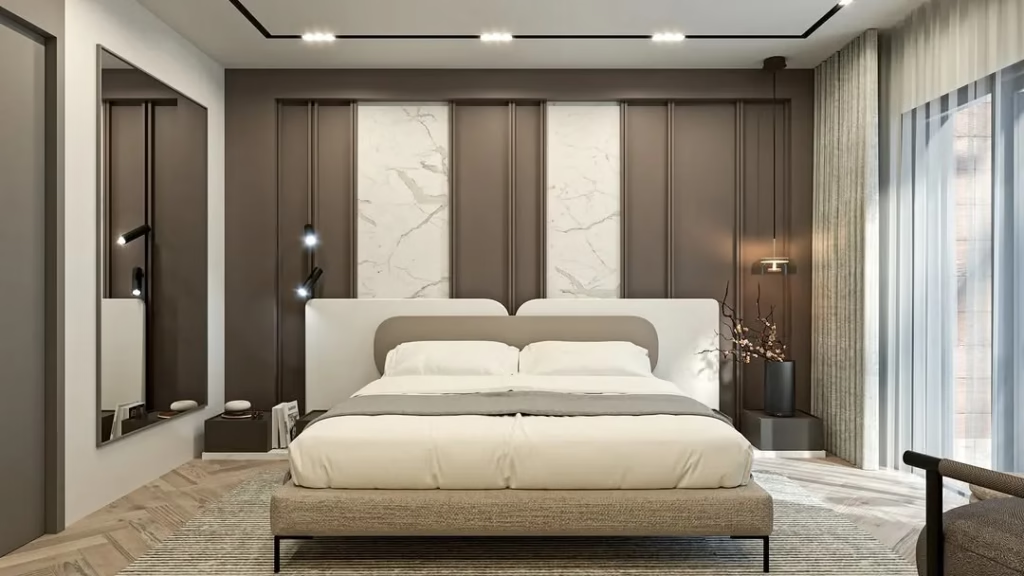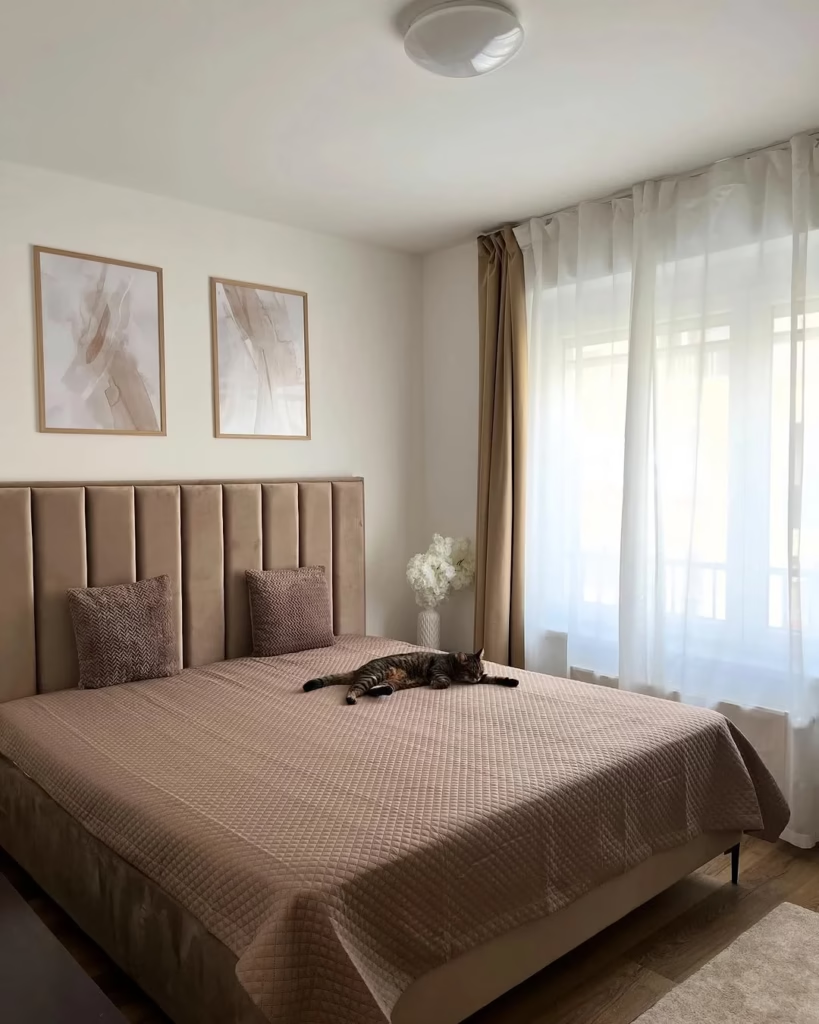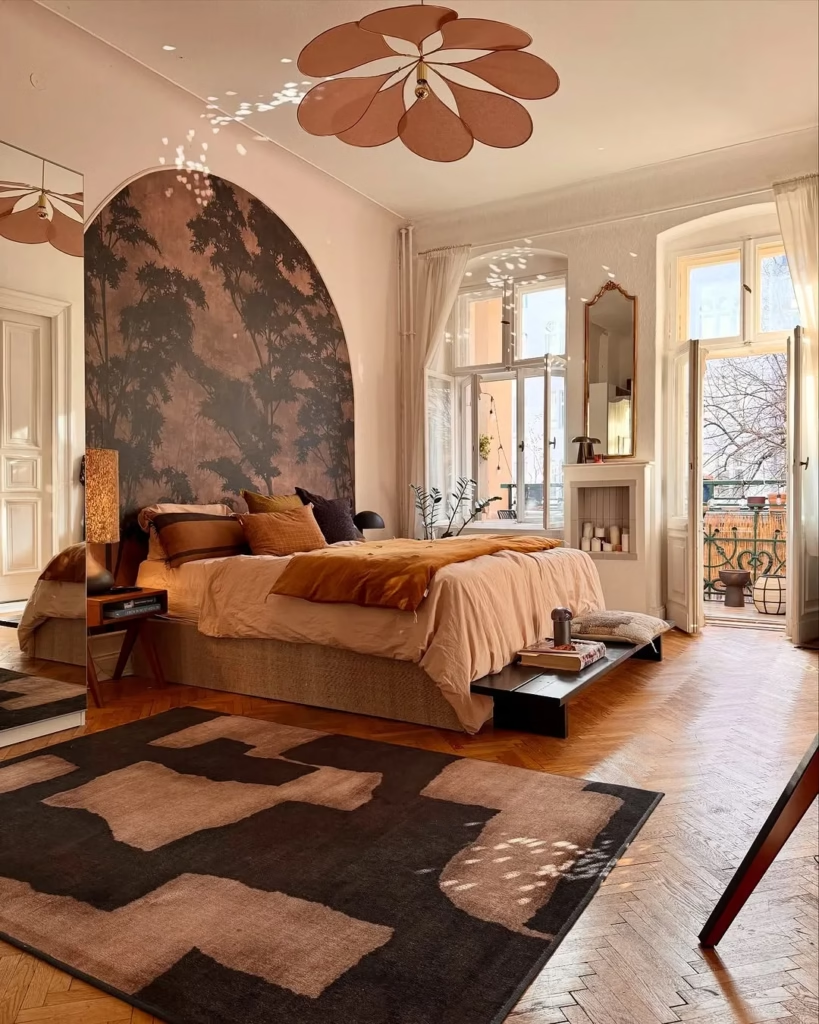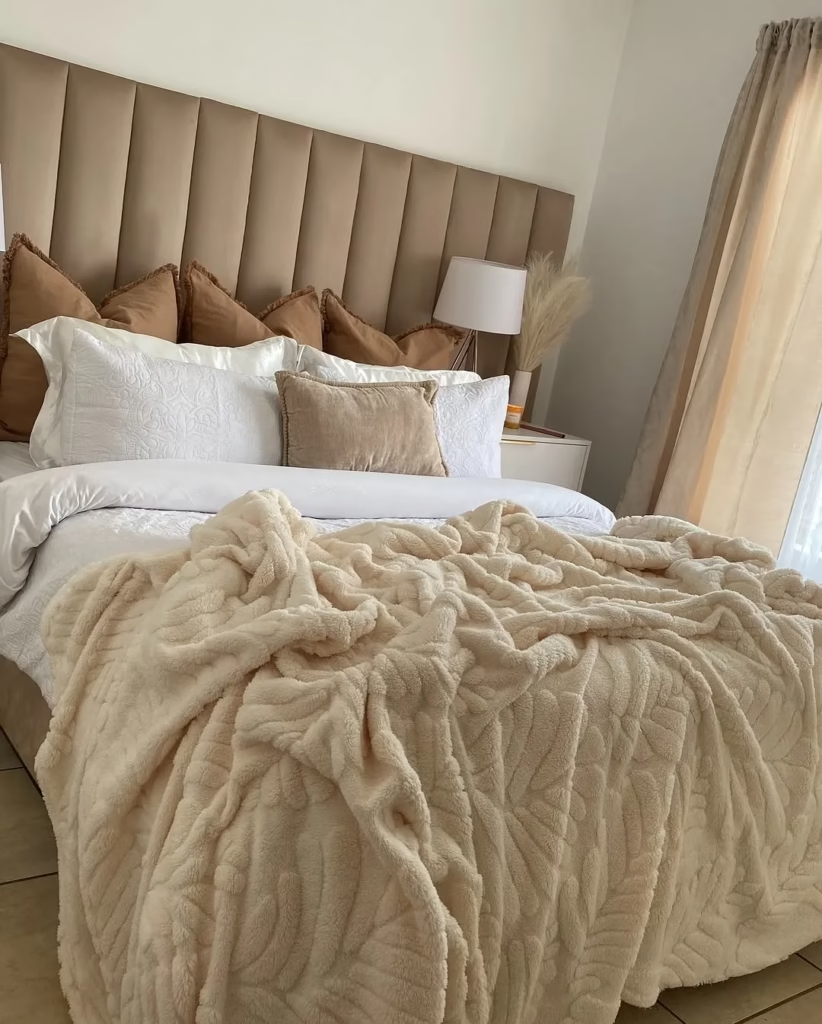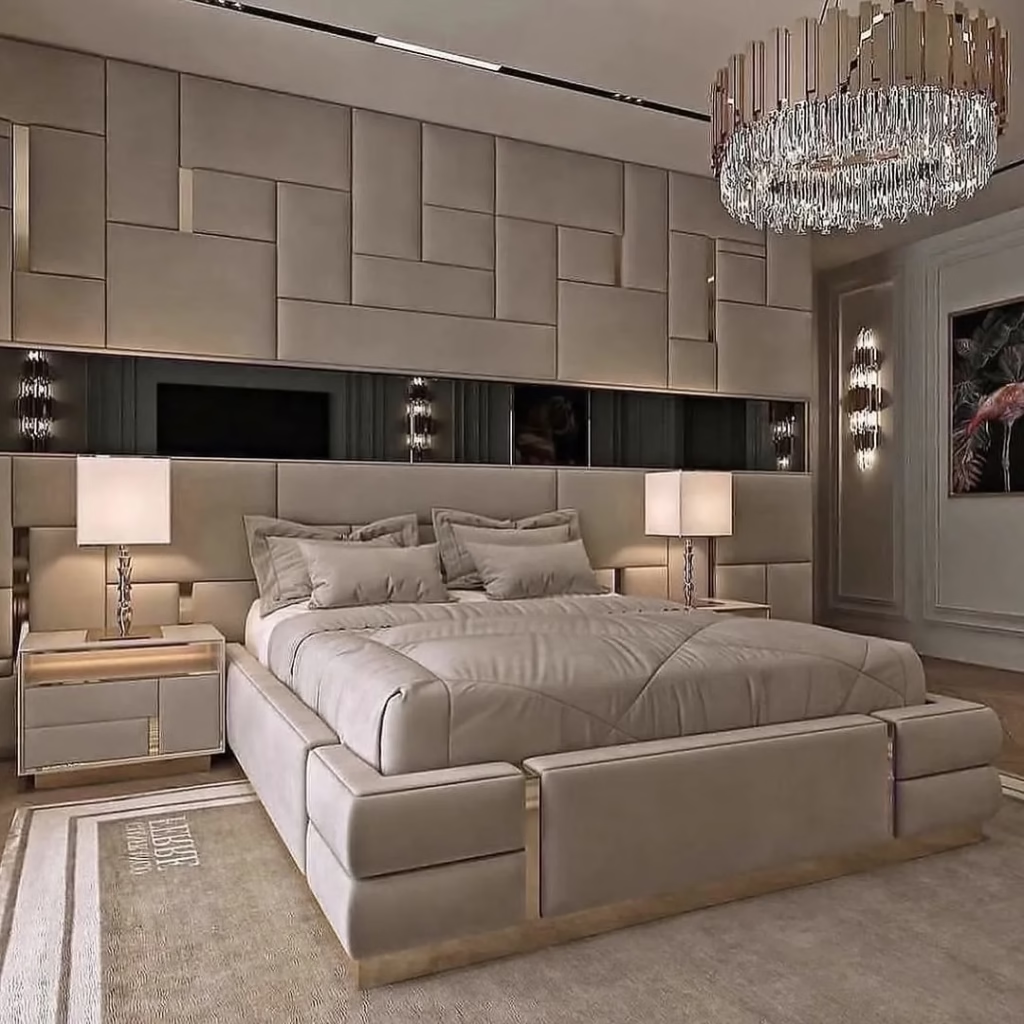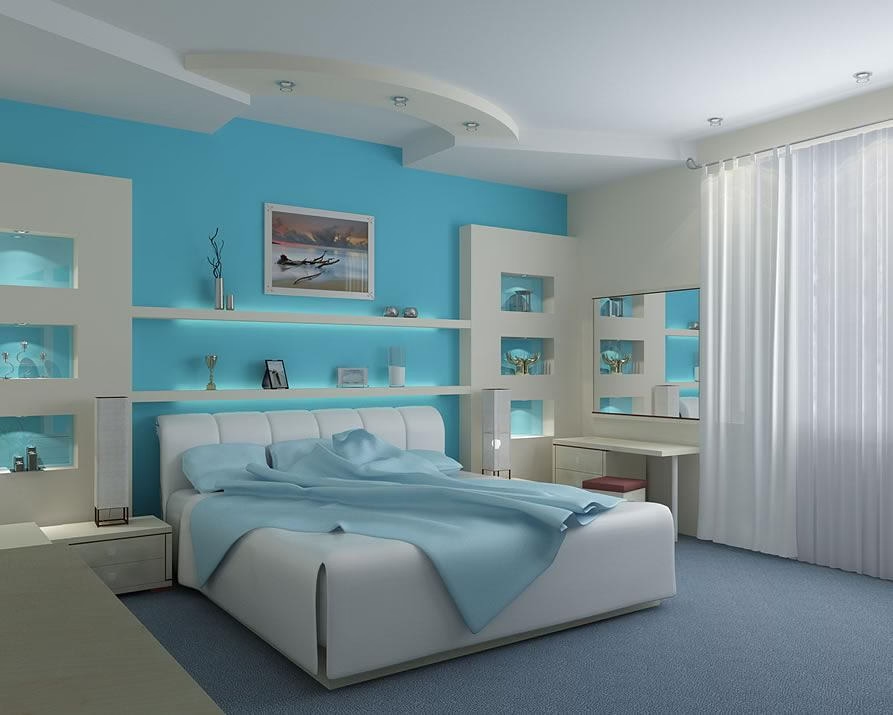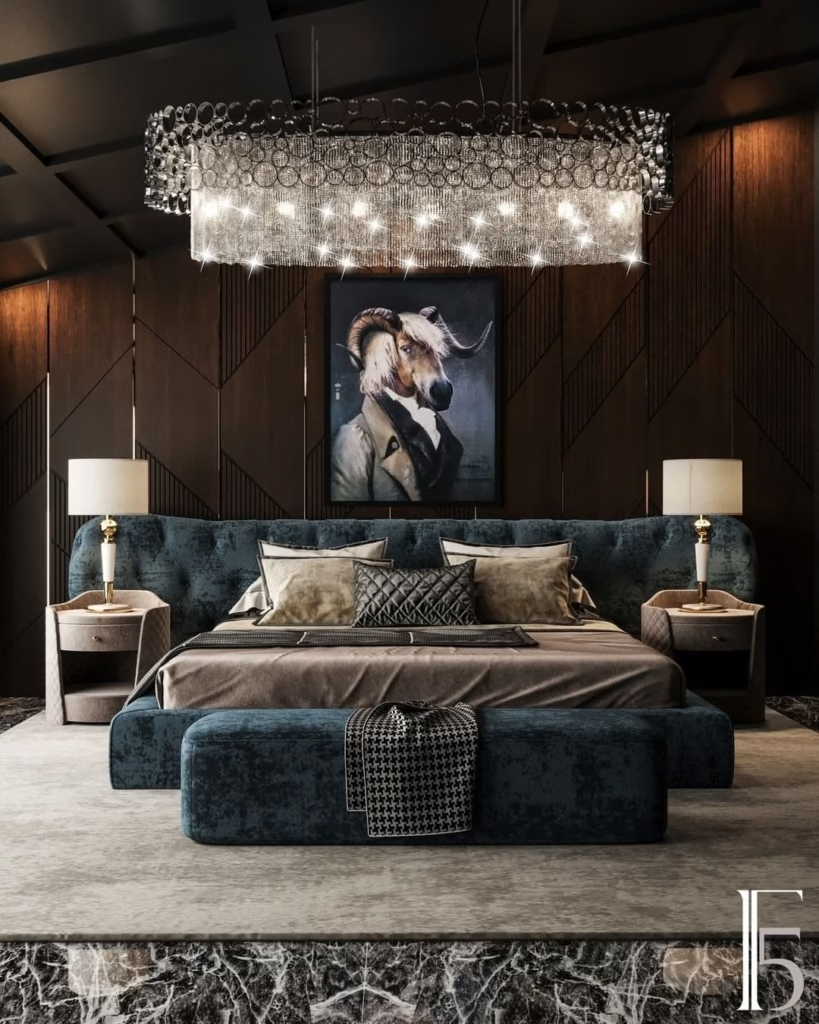Assess Your Needs Bed Design
The initial and most important step in designing your bespoke bed journey is to establish your requirements. This is the stage which will help you set the premise for all the next decisions, laying the groundwork for a bed that not only looks great but serves your precise needs. Start with thinking about your sleep style. Do you sleep on your side and require a softer mattress to cradle your shoulders and hips, or do you sleep on your back or stomach and like something firmer?
Knowing your sleep position will help you choose the correct mattress firmness and type — memory foam for pressure relief, innerspring for traditional support, or a hybrid to have the best of both worlds. Then, carefully examine the dimensions of your bedroom. The size of your bedroom will determine the best bed size — you might opt for a snug twin in a small room or a sprawling king in a master suite. It’s important to measure your room and take into consideration how the bed will fit next to other furniture, making sure there will be enough room to move comfortably.
And consider any special needs you may have. Do you have a small room so you require built-in storage to make the most of the space? Need an adjustable bed for health needs or just plain comfort? Or maybe you need a bed that fits dogs or kids who might hop in for a slumber party. Lifestyle and daily rituals are also key influences on bed design. If you like to read or work in bed, consider a headboard with built-in lighting or the type of design that allows you to sit comfortably. If aesthetics are important, consider how the bed’s style and materials will fit with the rest of your bedroom decor. Carefully considering these needs will ideally establish your design direction and help ensure that you create a bed that improves your sleep and fits well within your home.
Select Bed Frame Your Style
The bed frame you choose and what it says about your personal style is a pillar of crafting your bed. This choice is sure to affect both the general feel of your bedroom as well as the mood of your sleeping space. First, think about the different types of bed frames and which style suits your taste. If you’re partial to a minimalist aesthetic, a streamlined platform bed that lacks storage space but offers clean lines and a low profile is an ideal option. This often features narrow frames to achieve a minimalist design that helps blend with modern or contemporary spaces to instill a sense of calm and order.
A little bit of luxury and grandeur goes a long way, and a canopy bed might just be the perfect choice for those who crave it. With its elegant posts and the potential for draping fabric, a canopy bed adds a theatrical element and can turn your bedroom into a royal retreat. If you like traditional or rustic styles, however, a sleigh bed with its scalloped headboard and footboard may be more to your liking. These frames have a lot of warmth and oozed nostalgia with their cozy bedrooms out there. Another option for bed frames is upholstered frames, which add comfort to the bed frame. Offered in numerous fabrics and colors, the great thing about these frames is they bring a soft, inviting look to the room.
They’re especially well-suited to those who like a more relaxed, bohemian feel or want to inject a bit of color or texture into the bedroom. And while choosing a bed frame, think about the material, as well. Wood frames can provide a warm, natural aspect to your space, while metal frames lend more of an industrial or vintage vibe. Upholstered frames, as noted, make for a softer, more tactile experience. When you pick a bed frame that suits your vibe, you make a bed that is more than a sleep space; it becomes a statement piece with its own character that can transform the feel of your whole bedroom with whatever it represents to you.
Choose Frame Material In Your Bed
Choosing the right material for your bed frame is an important decision that affects how your bedroom looks and how well it performs. The material you decide upon will not only dictate how your bed looks and feels, but also how long it lasts, what kind of upkeep it needs, and how the rest of your decor will interact with it. To help you make an informed decision, here are the most common bed frame materials and their main characteristics. Wood blinds also never go out of style and suit rustic to contemporary designs. Oaks, walnuts and cherries provide unmatched durability with a deep natural feel.
Some can be stained or painted to match your bedroom color scheme also, which make them highly customizable. Softwoods such as pine are more affordable but do not last as long. Wood frames also add warmth and an element of nature into your space, which is perfect for anyone who loves a cozy, organic vibe. Metal frames: Metal frames, usually made from steel or iron, give a modern or vintage feel to your bedroom design with a clean, sleek look. They also tend to be less expensive than wood and can be extremely durable (especially if powder-coated to avoid rust). Metal frames are great for anyone preferring a minimalist or industrial feel, and come in a variety of finishes — from matte black to brushed nickel — that provide design flexibility.
Upholstered bed frames have a soft, inviting appearance that can lend an air of luxury and comfort to your bedroom. These frames are available in a range of fabrics, including velvet, linen or leather, and can add texture and color to your space. They work especially well for those who have a penchant for a laid-back, bohemian aesthetic or wish to create a cozy, hotel-like vibe. Upholstered frames, however, may take a little more maintenance to keep clean and stain-free. Consider your lifestyle, budget and the overall look you want to create when selecting which bed frame material is best for you. Material can come with its own pros, but some cons too, so consider these carefully to ensure your bed frame looks beautiful while remaining practical for years to come.
Choose Color Your Bed
Picking the right color for your bed is an important decision that will drastically impact the whole ambiance and aesthetic of your bedroom. Here are some expert tips on how to select the right shades to use on your bed — which will affect not just its visual impact, but also the ambience and overall harmony in your room. While getting to know how many elements, you will seek several facets as the factors which include your personal taste, the preliminary hues of your room, and the impact of different colors in your cerebration activity level.
If you’re hoping for a peaceful and relaxing bedroom, why not use cool tones such as the blues and greens? These hues are considered to be more soothing and may establish a peaceful sleep space. It reminds us of a clear sky or a calm sea40 and can help people relax for a good night sleep if you use a light blue bed frame or beddings. Likewise, soft greens may create an organic feel to rooms and promote a sense of calm and renewal. However, if you’re looking for warm more energizing space, warmer colours like reds, oranges and yellows could be more appropriate. These tones can create warmth and coziness within your bedroom, keeping it alive and inviting. However if there is a headboard, then having a rich red or burnt orange bedframe can throw a bold statement in your room. You should be careful not to use too many of these stimulating colors, since they may disrupt your ability to relax at night. Neutrals — whites, grays and beiges — make for a versatile, timeless choice. Such colors help achieve a very fresh, beguiling, minimalist look which goes easily with the other elements in a bedroom.
A white or gray bed can be a blank canvas, so when you’re ready for a change, you can experiment with various accent colors through bedding, pillows and decor. If your room is small, then neutral is great for you, too − a good neutral can open up a room. Do the same for the color of your bed. For example, purple represents wealth and creativity, and black is sophistication and drama. The color best suited for your bed is the one that speaks to you, a shade that aesthetically brings in harmony to the design and interiors of the room. With so many sleep environment rules to follow with our bed, it’s easy to forget about the color of our bed — but by choosing a color that fits your aesthetic and emotional needs, you can create a bed that not only looks amazing but adds to your sleepy, restful, and welcoming bed.
Pick A Mattress Type Your Bed
Selecting the right type of mattress is a significant decision that has a direct effect on your quality of sleep and overall health. There is a wide range of options out there but it’s important to know the properties and advantages of each type so you can make the right choice according to your habits and needs. So now lets take a look at the most common of mattress types: Memory Foam, Innerspring, Latex and Hybrid. Memory Foam mattresses are famous for their body-contouring capabilities along with good pressure relieving and support. These mattresses are made of viscoelastic foam, which responds to your body heat and weight, hugging your body and distributing your weight evenly. This is especially helpful for side sleepers, as it relieves pressure points on the shoulders and hips.
That also means that memory foam cuts down on motion transfer, so it’s ideal for couples. But some people may find it too soft or experience a “sinking” sensation, and it can retain heat, though many newer memory foam mattresses have cooling technologies to lessen that problem. Innerspring mattresses are the classic option with a coil support system for a bouncy, responsive feel. These mattresses are typically cheaper and provide better airflow, which can be a bonus for hot sleepers. The coil count and coil manufacturing methods often distinguish one innerspring mattress from another, with higher coil counts generally providing better support and durability. While they may not have the same amount of pressure relief as memory foam or latex, they can suit back and stomach sleepers who like a firmer feel. Latex Mattresses | A latex mattress is made of natural or synthetic latex and has a unique feel of both responsiveness and pressure secretion. They can last a really long time and be the Eco-friendly choice, particularly when constructed with natural latex. Latex mattresses have a buoyant feel that can be comfortable for all sleep positions, and because they’re naturally hypoallergenic, they also resist dust mites and mold.
They can, however, be pricier than other kinds, and they do carry a unique aroma when you first start them. Hybrid mattresses offer the best of both worlds by incorporating a coil support system above with layers of foam or latex on top. That design is intended to give the pressure relief and contouring of foam or latex with the support and bounce of innerspring. Hybrids can be a great option for those looking for the best of both comfort and support, and they tend to have good motion isolation and temperature regulation. But they can be pricier than standalone innerspring or foam mattresses. Consider your sleep position, body weight and any health issues, such as back pain or allergies, when choosing a mattress type. You can also test different types while under a roof or by utilizing one of the many trial periods many mattress brands offer to ensure they’re the right fit for your bed and sleep styles.
Determine Mattress Firmness Bed
Choosing the right mattress firmness is an essential component of creating your ideal bed since it influences both your sleep quality and level of comfort. Mattress firmness is generally classified on a scale from soft to firm, with medium options in between. If you want to more specifically understand how various firmness levels cater to different sleep positions and body types, gaining knowledge on that front can help make your decision easier. Side sleepers are typically recommended a softer to medium mattress. Sleeping on your side creates pressure at the shoulders and hips, and a little more cushion from a softer mattress can relieve those pressure points. In most cases, a mattress rated between 4-6 on a firmness scale of 1-10 (with 10 being the most firm) is best suited for side sleeping,
providing enough contouring to properly support the natural curves of the body while keeping the spine in alignment. Those laid on their back usually find a medium to medium-firm mattress most comfortable including a 6-7 on the firmness scale. This degree of hardness offers a perfect balance of assistance as well as comfort, supporting the all-natural arch of the spine. A mattress that is too soft may cause the lower back to sag, resulting in discomfort, while one that is too hard may not provide enough cushioning for the shoulders and hips. Stomach sleepers generally need a firmer mattress to prevent the hips from sinking too deeply and resulting in an unnatural arch in the spine. Typically rated 7-8 on the firmness scale, this level of support promotes proper alignment of the body and helps ease lower back pressure for stomach sleepers.
Combination sleepers — those who change positions throughout the night — may find that a medium firmness (roughly 5-7) is the most versatile choice. This balanced firmness will work for different sleep positions while still remaining supportive and comfortable. Your body weight also impacts the right firmness level for your mattress. Heavier people may need a firmer mattress to avoid sinkage; and lighter people will likely prefer something softer. Also, if someone has certain health conditions, like back pain, they may appreciate a mattress with targeted support zones or adjustable firmness options. To help guide the firmness of your mattress choice, we recommend you measure through different types of mattress in a store, or use a trial period, offered by most mattress brands. This allows you to find just the right mix of comfort and support for your individual sleep preferences so that the bed actively promotes restful and restorative sleep.
Add A Box In Your Spring Bed
By obtaining a box spring for your mattress, you can greatly improve both mattress comfort and lifespan. The box spring (or foundation) provides a cradle for your mattress to rest on, distributing your bodyweight evenly over its surface and helping to dissipate wear and tear over time. While it is an essential component of all mattresses, its importance is especially pronounced in innerspring models, where it works in conjunction with the coil system (including microcoils) to support the body, add stability, and control motion transfer. Box springs are designed to absorb shock and reduce the extent to which a mattress sags over time with regular use. serves as a barrier between the mattress and the bed frame, ensuring that the mattress retains its shape and lasts longer.
This is especially helpful for heavier people or bed sharers, as the extra support can minimize dipping in the center of the mattress. Box springs are available in a variety of heights, which can help determine the overall height of your bed and can range anywhere from 5 to 9 inches tall. Especially for people with mobility difficulties, a higher box spring can help you get in and out of bed more easily. In addition, the height can add to the beauty of your bedroom, giving it an awesome or luxury look based on your taste. Choose a box spring that fits the size of your mattress — twin, full, queen or king, to ensure it offers adequate support. Some box springs are made in two separate pieces, making them easier to fit down narrow hallways or around stairs while setting up.
You might also want to take the box spring material into account, as wooden frames can be more durable and sturdy, while metal frames tend to be more affordable and lightweight. If you have a platform bed, or have a foam or latex mattress, you might not need a standard box spring. For such platforms, a solid foundation or bunkie board can be utilized as an alternative to the standard box spring for additional sturdiness while eliminating extra height. But if you’ve got an innerspring mattress on a regular bed frame, a box spring is well worth the investment, as it can elevate your comfort and prolong your mattress’s life. Adding a box spring to your sleep setup not only helps contribute to an overall better night’s rest, but it also ensures the longevity of your mattress, allowing you to have the ideal bed of your dreams for a longer time period.
Select A Headboard
Choose A Headboard That Compliments Your Bed DesignChoosing the right headboard is an essential step in creating your dream bed, as it plays both a practical and style role. Not only does a headboard make your bedroom feel pulled together with a design focal point, but it also offers support for when you are sitting up in bed to read, work, or just kick back. When choosing a headboard, you want to think about how it will connect with the bed frame and mattress, and with your entire bedroom decor to form a unified and welcoming space. Design and Looks: Your headboard design should match with your taste and the overall look theme of your bedroom.
If you love a little bit of minimalism, a sleek headboard with clean lines might work better for you. If you prefer a more traditional or rustic look, consider a wooden headboard with carved details or a sleigh-style headboard. Upholstered headboards also provide a comfortable, plush texture and are available in many styles, fabrics, and colors, making them versatile across themes from modern to bohemian. Material — The type of material used for the headboard will greatly affect how your bed looks and feels. Headboards made of wood add warmth and a natural feel, and headboards made of metal can give an industrial or vintage feel. As mentioned, upholstered headboards create a warm, welcoming environment. Think about the durability and maintenance needs in comparison to other materials, and how well they will work together with other aspects of your bedroom. Scale and Size: Your headboard must properly size to your bed and the saving room.
A headboard that’s too small can feel boxed in, while a headboard that’s too large can seem bulky. This helps keep the proportions of your room looking just right, as you’ll want your new headboard to fit within the dimensions of the space. Functionality: Few benefits of how you’ll use it. If you have a tendency to prop yourself up in bed, you may prefer a tall headboard with built-in padding or a curved design for additional support. And some headboards have built-in storage or shelves that may be a more practical addition, particularly in smaller bedrooms. Color and Finish: Your headboard color and finish should complement your bedding, bed frame, and other bedroom furniture as well. Headboards in a neutral color can act as a backdrop that you can switch your bedding and decor around without worrying they’ll clash. A bold, statement headboard, on the other hand, can take center stage in your room and give your space personality and pizazz. Whether its a large and elaborate statement headboard or a simple minimalist approach, choosing the right headboard to match the design of your bed is a great way to add the finishing touch to your bedroom. Whether you want a minimalist number, something a little more classic, or an upholstered headboard, it should meet your needs and expectations in order to finish your ideal bed.
Incorporate Storage Solutions Your Bed
Make Bed Design With Storage Solutions When space is at a premium, include storage solutions in the design of your bed. This is especially important for anyone who has a small room or is hoping to maximize their living space. There are numerous effective methods for incorporating storage into your bed, each with its benefits and suitability for various needs. Most VersatileThing to use under bed: One of the most popular type of these can be used as under bed storage. This can be accomplished with built-in drawers that slide out from under the bed frame, offering easy access to items such as clothing, linens or shoes.
Another option would be to use storage bins or rolling drawers that slide under the bed, a more flexible and cost-effective solution. Under-bed storage is perfect for hiding seasonal items or items that are used less frequently but are still within reach. Shelves or compartments in the headboard: For another ingenious option, consider a headboard that doubles up as a storage unit. Some headboards feature built-in shelves or compartments for books, electronics, or decorative items. In addition to increasing functionality for your bed, it also adds visual interest by turning your bed into a multifunctional furniture piece. A headboard with storage can be especially helpful for those who like to read or work in bed since it keeps disposable items close by. Lift-Up or Ottoman Beds: If someone requires more extensive storage space, they need to check a lift-up / ottoman bed. These beds also have a hydraulic lifting mechanism that enables the entire mattress section to be lifted, using a hydraulic mechanism, and reveals a large storage compartment underneath the bed.
This kind of bed is ideal for stowing away larger items such as luggage, bedding or even seasonal clothing. Lift-up beds are particularly useful in compact bedrooms where typical storage furniture may not go. Invisible Storage: Some bed frames include built-in drawers on either side, which complements nicely and provides a sleek storage solution. These drawers can store items from clothes to accessories and are especially helpful for someone who shares a bed with another person by giving a designated spot to store items. So, consider your specific needs as well as the space you have available in your bedroom when incorporating different types of storage into your bed design. Utilizing the correct storage solutions will help you keep the ideal sleeping facilities, so your perfect bed would not only look good but will fulfill practical needs.
Choose Bedding Bed
From your comfort to sleep, combined with the look of your bedroom comes with selecting the appropriate type of bedding (474) that is an important starting point in building your ideal bed. Bedding includes sheets, duvets, comforters, pillows and throws, all of which work to make the bed functional and stylish. Be sure to take into account your material choices, thread counts, warmth, and designs when selecting your bedding, to create a harmonious and cozy bedtime experience. Sheets: The most basic of all beddingsheets. The material of your sheets impacts how you sleep tremendously. Cotton Breathable and soft, varieties like Egyptian or Pima cotton offer a luxurious feel. You might choose moisture-wicking textiles such as bamboo or linen, which can keep your body temperature more normal, if you’re a hot sleeper.
Thread count is also a consideration; higher thread counts usually mean a smoother, more durable sheet, but the quality of the cotton matters, too. Look for a thread count of 200 to 600 for a combination of comfort and value. Duvets and Down: Second, get a duvet or comforter that works for your climate and sleeping preferences. Duvets are big comforters that usually contain synthetic materials or down, though they can also come sleeveless so that they can be removed and washed or be traded out seasonally for a new look. Comforters, meanwhile, are typically quilted and come in different warmth options. In cooler climates, go for a higher tog rating or a down-filled duvet for maximum warmth. In warmer areas, a lightweight, airy comforter or a comforter with a lower tog rating could be better for you. Pillows: Pillows provide support for your head and neck, and the right pillow can make a world of difference in the quality of your sleep. Keep your sleeping position in mind when choosing pillows; side sleepers may want to use firm, thick pillows to keep your spine properly aligned, while back and stomach sleepers may prefer soft, thin pillows.
You have different materials such as memory foam, down or synthetic fiber that offer different support and comfort, so choose based on personal needs. Throws and Decorative Pillows: Finally, spice up the visual of your bed with throws and decorative pillows. Throws can provide an additional layer of warmth and texture when needed, and decorative pillows can bring in color and pattern and a sense of your personal style. Opt for throws and pillows that coordinate with the hues in your sheets and duvet, uniting your bed design in a seamless fashion. Whether you want your bedroom to be the space you dream about or you had your eye on the most comfortable sleep — with the right bedding you can have both. Make sure that your bedding complements your ideal bed design by taking into consideration your personal taste, climate and the overall décor of your bedroom.
Layer With Textiles Style Bed
The next thing that really can change the comfort level and style of where you sleep is layering your bed with textiles. This includes layering sheets, duvets, throws and pillows to make each bed beautifully inviting. A well thought-out combination of fabrics and not only offers you a comfy bed setup but also a good-looking one. Begin with a base set of high-quality sheets. The material of your sheets matters a lot for how comfortable they are; cotton — and especially types like Egyptian or Pima cotton — provides breathability and a soft feel. If you sleep hot, look for moisture-wicking fabrics, such as bamboo or linen. Pick a hue and print that works well with the rest of your bedroom decor, whether that’s a classic white for a more pared-back touch or a pale print for a little extra dimension.
Then, add a duvet or comforter. Duvets are versatile; you can swap out the cover to suit your taste or the season. Choose a duvet with a fill that is appropriate for your climate; down provides warmth for the cold weather months, but you may want a synthetic fill for a warmer climate. Comforters are typically quilted and available in a variety of warmth levels, so select one that matches your sleep needs. The color and pattern on your duvet or comforter should coordinate with your sheets, whether those are solid, striped or patterned, so the valley between fits in with the mountain. Throws provide an additional layer of warmth and texture. Lay a throw over the end of the bed or drape it over the duvet for a welcoming, here-we-are approach. Select a throw in a matching color or varied texture to bring some depth and interest to your bed layout. Throws can also take a seasonal swap, so it’s easy to change the look of your bed.
Pillows make or break a space —sorry, but it’s true! I recommend starting with sleeping pillows that are appropriate for your usual sleeping position — firmer for side-sleepers, soft for back-sleepers and stomach-sleepers. Then, add decorative pillows for the bed to be aesthetically pleasing. Include a variety of standard, euro and lumbar pillows, and arrange them to be visually balanced and inviting. Experiment with various fabrics or patterns to impart personality and connect with your bedroom’s decor. Lastly, think about textural components such as a quilt or a bed runner to introduce another layer of interest. These can be thrown at the foot of the bed or over a duvet for a hint of luxury and comfort. And there you have it — three effortlessly chic layers for covering your bed, putting relatively simple home improvement tips into action.
Add Lighting the room bed
Having the right lighting around your bed is important to create a pleasant and functional sleep environment. Lighting can change the atmosphere in your bedroom, but it’s also one of the most important pieces of your day-to-day schedule, from reading in bed at night to waking up and getting ready to face the day. When conceptualizing your bed and bedroom, a layered lighting approach featuring ambient, task, and accent lighting can complement both the style and utility of your space. Ambient Light: First, let’s talk about ambient light, which is what gives you general illumination in the space. A ceiling fixture, like a chandelier or a flush mounted light, can provide a lot of ambient light. Select a fixture that fits the style of your bedroom but has enough light to help you navigate the area.
Dimmable options are best, as they permit you to set the intensity of light you need for different times of day or certain moods. Task lighting—For reading or doing work in bed, task lighting is necessary. Bedside table lamps are a great option — but they only really provide focused light right where you need it. Select lamps with adjustable arms or shades, to light your book or device with precision. Think about the color temperature of the bulbs; warmer tones (about 2700K) create a cozy vibe, while cooler tones (about 5000K) are better for focused tasks. Accent Lighting: Include accent lighting to add dimension and character to your bedroom. That can be wall sconces, under-bed lighting or even a lighted headboard. For instance, accent lighting can draw attention to architectural details or art pieces, which can add a lot of depth to a space and make it more interesting. Installing LED strips or puck lights under the bed frame will make a soft glow, will illuminate the overall design of the bed, and will make it easier for the user to get in and out of bed at night. With smart devices these days, why not install smart lighting in your bedroom either? Smart bulbs and fixtures are app- or voice-controlled, enabling you to create to adjust brightness levels, colors and even set up lighting schedules.
This can come in particularly handy when you’re trying to establish a calming nighttime routine or wake up slowly with simulated sunrise lighting. Be sure to position the fixtures in such a way that they do not interfere with your sleep when adding lighting in your bedroom. Shun the direct overhead light — that can be too harsh — and use soft, diffused sources of light conducive to relaxation. Everybody knows the right bed and bedroom lighting can be stylish and will help you sleep and get things done during the day.
Color Palettes Pictures In Your Bed
Colourpalettesandimagesgivingbackgroundtogiveintegrationswithbeddesignefficiently. Finding the right mix of colors and visual elements simply shapes your bed into a centerpiece that adds your detailing and makes an aura of unity. Think about the colour palettes and pictures from there and how they will work in cohesion together alongside the general decorative of your room. Choose a Color Palette The first step in your bedroom makeover plan is selecting a color palette that suits your tastes and the mood you want to foster in your bedroom. Choose cool tones such as blues and greens for a soothing and calm atmosphere. These shades can also create a sense of calm and relaxation, making them perfect for a space designed for sleep.
For a More Lively and upbeat environment, consider warmer shades of red, orange, yellows. These can create warmth and energy in your bedroom, but should be used sparingly to prevent overstimulation in the evening. Now, once you have your colour palette sorted, fill up on pictures that fit your selected colours, and what you enjoy. Art, photos, or prints can hang on the wall above the bed, or be incorporated into a gallery wall that goes beyond the bed space. The photos you choose should also fit your color scheme but also tell a story, a story or an emotion you want to get every time you step into your bedroom. For example, nature-inspired artwork in cool hues can amplify the calming effect of your chosen palette, and abstract pieces in warm shades can bring in a dynamic and energetic flair. When organizing your images, have an eye for the scale and positioning, so that they complement and not drown your bedroom design.
A big statement piece over the headboard can be an arresting focal point, while a gallery of smaller prints can make an eclectic and personal statement. Let us not forget obviously, the frames and matting of your pictures you will use, which can have a giant impact on the aesthetic of your room, so be certain that these also fit your color palette and bed room decor. To bring everything together, introduce textiles like throw pillows, blankets or a bed runner in shades that complement your chosen colour palette. They add texture and depth — drawing together your bed design into one cohesive yet inviting area space. Integrating colour palettes and pictures in a bed design will make a space look good but also feel good, as it not only beautifies it but also adds character and shows your personality.Transform Your Style: How to Make Beautiful Earrings at Home
Consider Adding Textiles Pillows Blankets Bed
Adding textiles such as pillows or blankets in the bed design is an important step that can increase the comfort in the bedroom as well as improve the overall appearance. These make up the overall aesthetics and ambience of your bed and are also critical to creating a comfortable and welcoming sleeping space. Choose pillows and blankets on the basis of material, color, texture, and functionality to suit your individual style and sleep preferences. Pillows — Of course you want to begin with the standard sleeping pillows, which should be among the most supportive types of pillows that you will use for your head and neck. The type of pillow you buy should also be based on your preferred sleep position; side sleepers tend to do best with firmer, thicker pillows that hold the spine in place, while back and stomach sleepers often gravitate toward softer, thinner products.
Choosing materials offers a variety of support and comfort levels, from memory foam to down to synthetic fibers, so go based on your own needs. Once you have the sleeping pillows, stack decorative pillows on top to make the bed look more visually appealing. Choose a combination of sizes and shapes (standard, euro, and lumbar pillows) to create a visually appealing, well-balanced arrangement Have fun exploring different fabrics and patterns to lend personality and harmonize with your bedroom decor. Blankets: Blankets provide an added layer of warmth and texture to your bed. When choosing blankets, take into consideration the climate and your own comfort preferences. In winter or cooler months, heavier materials, including wool or fleece, which will keep you warm. You might prefer lighter weights such as cotton or linen in warmer weather. Draped throws at the foot of the bed or folded across the duvet create a relaxed and welcoming feel. Choose a throw in a coordinating color or a contrasting texture to bring depth and interest to your bed design.
Throws can be swapped out seasonally, making it easy to refresh the look of your bed. If you’re adding textiles to your bed, make sure they coordinate with your overall color palette and the surrounding decor in your bedroom. The right mix of pillows and blankets can pull together a cohesive and stylish look that reflects your taste. This allows for the bed to become more than just a place to sleep, but rather, a snug and delightful showstopper that elevates, and decorates, your entire bedroom.Unleash Your Style: How to Design a Stunning Bedroom
Pictures That Resonate With Your Chosen Colors Bed
The next step is to choose pictures that work with the colors you’ve picked. The right artwork, or photographs, give the walls an aesthetic boost, rounding out your color palette and adding a dose of personality to your space. When choosing pictures, think about how they will cohere with your bed’s textiles, like sheets, duvets, and pillows, and the wider decoration of your room. Take a look at your bed design and note down the predominant colours. If you chose a soothing colour palette with cool tones, such as blues and greens, search for photographs that predominantly showcase these shades.
Artwork depicting nature, such as landscapes or seascapes, is a good option, too, as it often features these calming colors. A calm beach or peaceful forest, for example can amplify the calming effect of your chosen palette, to create a harmonious and restful aesthetic. Choose images that compliment these warm tones if your bed design contains reds, oranges, and yellows. Abstract art or big, bold and colorful prints will give energy and life to your space, which can complement the warmth of your textiles. A second piece of art with fiery reds and oranges can double as a dynamic focal point above your bed, while also tying into your throw pillows or blanket. As you arrange your pictures, keep in mind the scale and placement so that they complement rather than overwhelm your bed design. “We can add a large statement piece above the headboard as a bold focal point, or we can also do a series of pieces that are smaller and create a more eclectic and personal feel,”
Ms. Cordero said. Also be sure that the frames and matting of your pictures coordinate with your color palette and bedroom decor, because they can really affect the overall look of the room. Then tie it all together with textiles — throw pillows, blankets or a bed runner — in colors that fit your chosen palette and the hues in your pictures. These things can add more texture and depth, making your bed design more aligned and inviting. Civilization and the colors of wilderness go hand-in-hand.Elevate Your Style: Step-by-Step Nail Design Techniques

